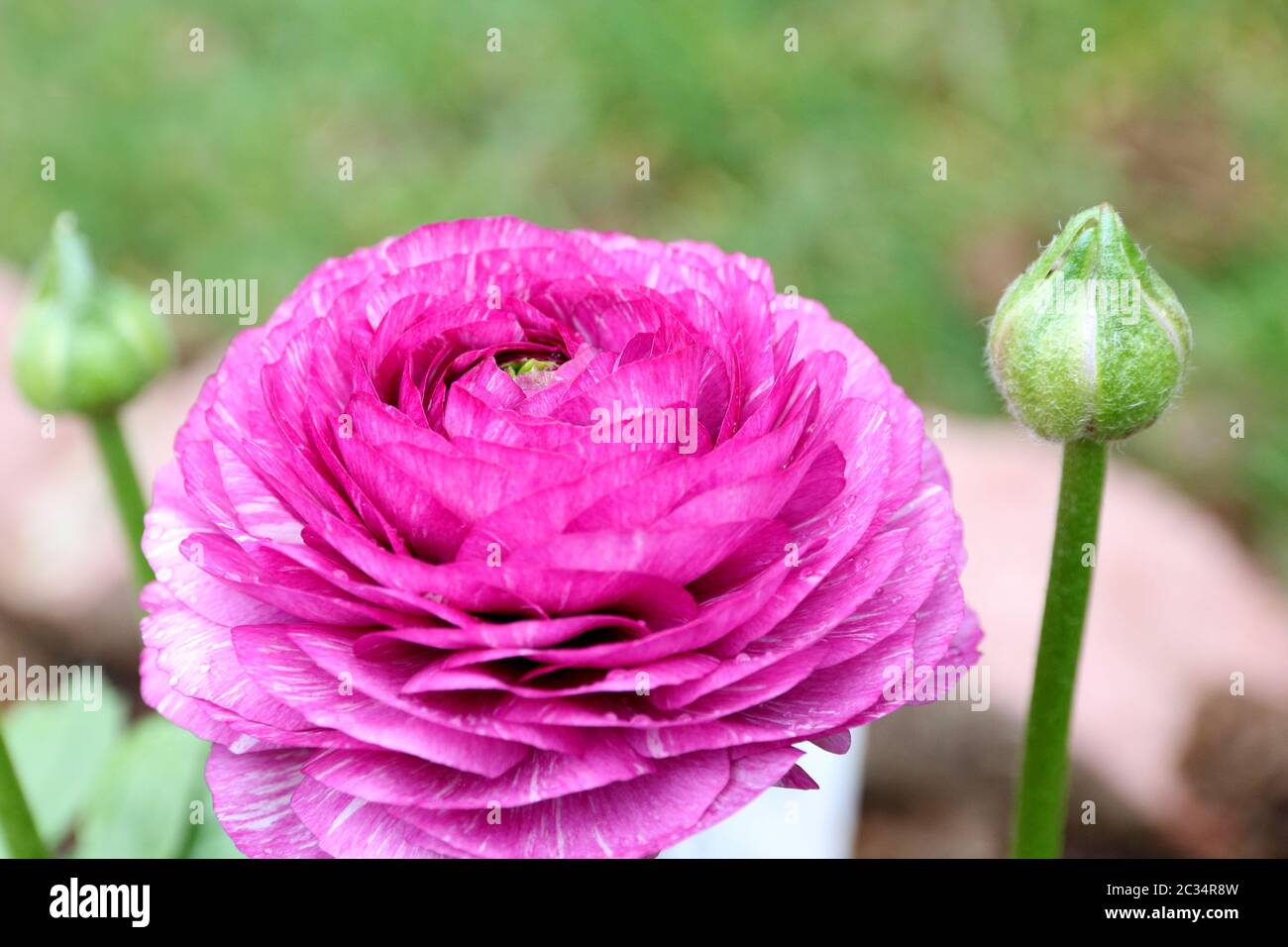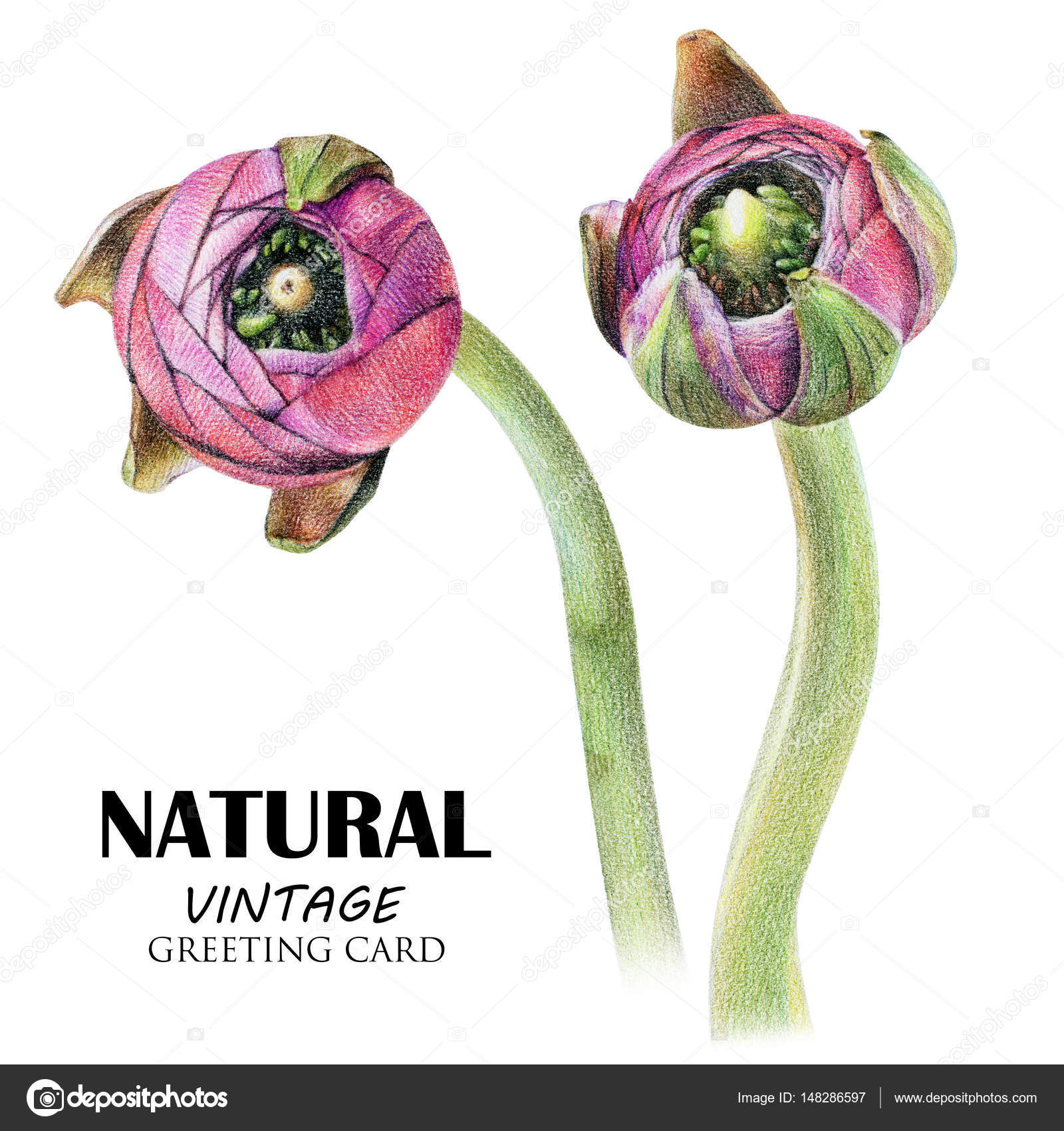'Purple Sensation' If you love deep purple, this grape-colored beauty with heavily ruffled flowers is a must. The dark, velvety blooms are stunning when planted in mass or when mixed with Ranunculus ‘Purple Picotee’, which has snow white blooms delicately outlined in violet.
Purple Buttercups Flowers
Ranunculaceae
Plants of the Buttercup Family
Frogbit buttercups are an aquatic variety of buttercup. They grow in water or wetlands. This also includes marshes, streams, and along lakes. They grow to about 6 inches tall, with shiny green leaves and even shinier yellow petals. Kashubian Buttercup (Ranunculus Cassubicus) Kashubian buttercups grow to about two and a half feet in height. The purple flowers are trumpet-shaped, soft and feathery, with fern-like foliage. The Jacaranda tree is fast growing and the purple flowers bloom in mid to late spring. Why are the little purple flowers growing in my yard? Henbit is an annual winter weed. It can grow up to 12 inches or taller and produces purple flowers. Growing Requirements for Persian Buttercups Ranunculus asiaticus should be grown in full sun except in warmer climates where it will need partial or light shade. In zones 8-10, they can be grown in the garden year round. In cooler regions they can be grown in containers and brought in during the winter.
Purple Buttercup Anemone

The Buttercup family is like a window back in time. None of today's species were around 100 million years ago, but the Buttercups and other primitive groups like the Magnolias have retained the most ancestral characteristics over time. The Buttercups are considered very 'simple' because the floral parts-the petals, sepals, stamens and pistils-are all of an indefinite number and separate from one another. Also, the stamens and pistils are spirally inserted in a cone-like receptacle, although it is often very small to see. More advanced plant families have reduced, more specific numbers of floral parts, and the parts are often fused together.
The Buttercup family may be considered 'simple' from an evolutionary standpoint, but it includes some flowers that are highly complex in appearance, such as the delphinium and columbine. Yet these flowers are still considered 'simple' because all the parts are independently attached.
You may discover that the most common pattern of the family is the apparent lack of a pattern! Buttercups can have either regular or irregular flowers with anywhere from 3 to 15 sepals, often colored like petals, and 0 to 23 actual petals. There are often, but not always, numerous stamens and 3- to numerous simple pistils (apocarpous). The floral parts are all independently attached below a superior ovary. Most have bisexual flowers, except some species of meadow rue (Thalictrum) and Clematis. Worldwide, there are 35-70 genera in the Buttercup family and about 2,000 species. Twenty-three genera are found in North America.
For the purposes of identification, the most accurate pattern to look for is the multiple simple pistils at the center of the flower. In more advanced plant families there is typically only one pistil, the result of a reduction in numbers along with the fusion of several pistils to make a single compound pistil. A flower with multiple pistils is very likely a Buttercup, but could potentially be confused with species from the Rose subfamily of the Rose Family. A secondary pattern that is often easier to see, but not as consistent, is the hooked tips on the pistils. If you are not sure if you are looking at several separate pistils or some that are only partially fused together, then look for a hook at the tip of the pistil. Many species have hooked pistils, and the hooks often persist as the ovary matures after pollination.
The predominant property in the plants of the Buttercup family is an acrid protoanemonin glycoside oil. Most of the species are listed as poisonous, but most are safe to taste. The buttercup taste is biting and acrid, stronger in some plants than others. Taste it and spit it out. The acrid properties of the buttercups are unstable and are destroyed by drying or cooking, so the very mild buttercups are edible as salad greens or pot herbs. But be careful not to over do even these, as the residual acrid properties may cause a mild inflammation of the kidneys or liver. Mucilaginous plants can be ingested to counter-effect the acrid buttercups. Medicinally, the acrid nature of the plants makes them great for stimulating poultices, similar to a 'mustard plaster'. These poultices can be used on bruises, aches or arthritis to stimulate healing activity inside, but be careful, because the poultices can cause blistering if left in place too long. The poultice can even stimulate activity in cases of mild paralysis. The acrid quality is also beneficial for getting rid of lice. Goldenseal (Hydrastis) is a popular medicinal herb from this family. It is favored for the very bitter and highly antiseptic berberine alkaloid, also found in a few related genera and in the Barberry Family.
WARNING: A number of plants in this family, especially Aconitum and Delphinium contain concentrations of toxic terpenoid alkaloids. These alkaloids depress the central nervous system; they are often used for nervous disorders, antispasmodics and sedatives. Some of these plants can be cautiously used internally (by professionals only!) as heart and respiratory sedatives.

Key Words:Dicot flowers with three or more simple pistils, often with hooked tips.

Purple Buttercup
Please e-mail Thomas J. Elpel to report mistakes or to inquire about purchasing high resolution photos of these plants.

